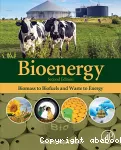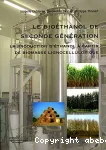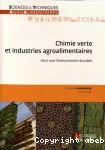Adresse
Infodoc : Réseau des bibliothèques et centres de documentation d'AgroParisTechFrance
contact

Catégories
Documents disponibles dans cette catégorie (20)
 Ajouter le résultat dans votre panier
Visionner les documents numériques
Faire une suggestion Affiner la recherche Interroger des sources externes
Ajouter le résultat dans votre panier
Visionner les documents numériques
Faire une suggestion Affiner la recherche Interroger des sources externes
 Livre
Livre
 Livre
Livre978-2-86479-926-996 p.
96 p.ISBN : 978-2-86479-926-9 
 Livre68 FRF
Livre68 FRF978-2-901133-11-71 vol. (79 p.)
1 vol. (79 p.)Prix : 68 FRF ISBN : 978-2-901133-11-7 
 Livre
Livre978-0-12-815497-71 vol. (LIX-830 p.)
1 vol. (LIX-830 p.)ISBN : 978-0-12-815497-7 
 Livre
LivreLe bioéthanol de seconde génération : la production d'éthanol à partir de biomasse lignocellulosique
23.00 EUR978-2-87016-085-51 vol. (128 p.)
1 vol. (128 p.)Prix : 23.00 EUR ISBN : 978-2-87016-085-5 
 Livre
Livre978-1-119-43432-01 vol. (XXV-506 p.)
1 vol. (XXV-506 p.)ISBN : 978-1-119-43432-0 
 Livre
Livre978-1-118-52495-4XI, 375 p.
XI, 375 p.ISBN : 978-1-118-52495-4 
 Livre125.00 EUR
Livre125.00 EUR978-2-7430-0834-51 vol. (XXV-532 p.)
1 vol. (XXV-532 p.)Prix : 125.00 EUR ISBN : 978-2-7430-0834-5 
 Livre125 EUR
Livre125 EUR978-2-7430-2513-71 vol. (XXXVII-515 p.)
1 vol. (XXXVII-515 p.)Prix : 125 EUR ISBN : 978-2-7430-2513-7 
 Bulletin
Bulletin
 Bulletin
Bulletin
 Bulletin
Bulletin
 Bulletin
Bulletin
 Mémoire2014 20141 vol. (29 p. ; 25 p.)
Mémoire2014 20141 vol. (29 p. ; 25 p.)
1 vol. (29 p. ; 25 p.)
 Thèse2019 20191 vol. (140 p.)
Thèse2019 20191 vol. (140 p.)
1 vol. (140 p.)
 Livre
Livre978-1-4398-3463-3xvii, 435 p.
xvii, 435 p.ISBN : 978-1-4398-3463-3 
 Livre
Livre978-1-138-06138-51 vol. (XVI-393 p.)
1 vol. (XVI-393 p.)ISBN : 978-1-138-06138-5 
 Thèse
Thèse
 Thèse2013 20132 vol. (480, 80 p.)
Thèse2013 20132 vol. (480, 80 p.)
2 vol. (480, 80 p.)
 LivreBr. 40.00 FRF
LivreBr. 40.00 FRF978-2-11-109354-6110 p.
110 p.Prix : Br. 40.00 FRF ISBN : 978-2-11-109354-6





